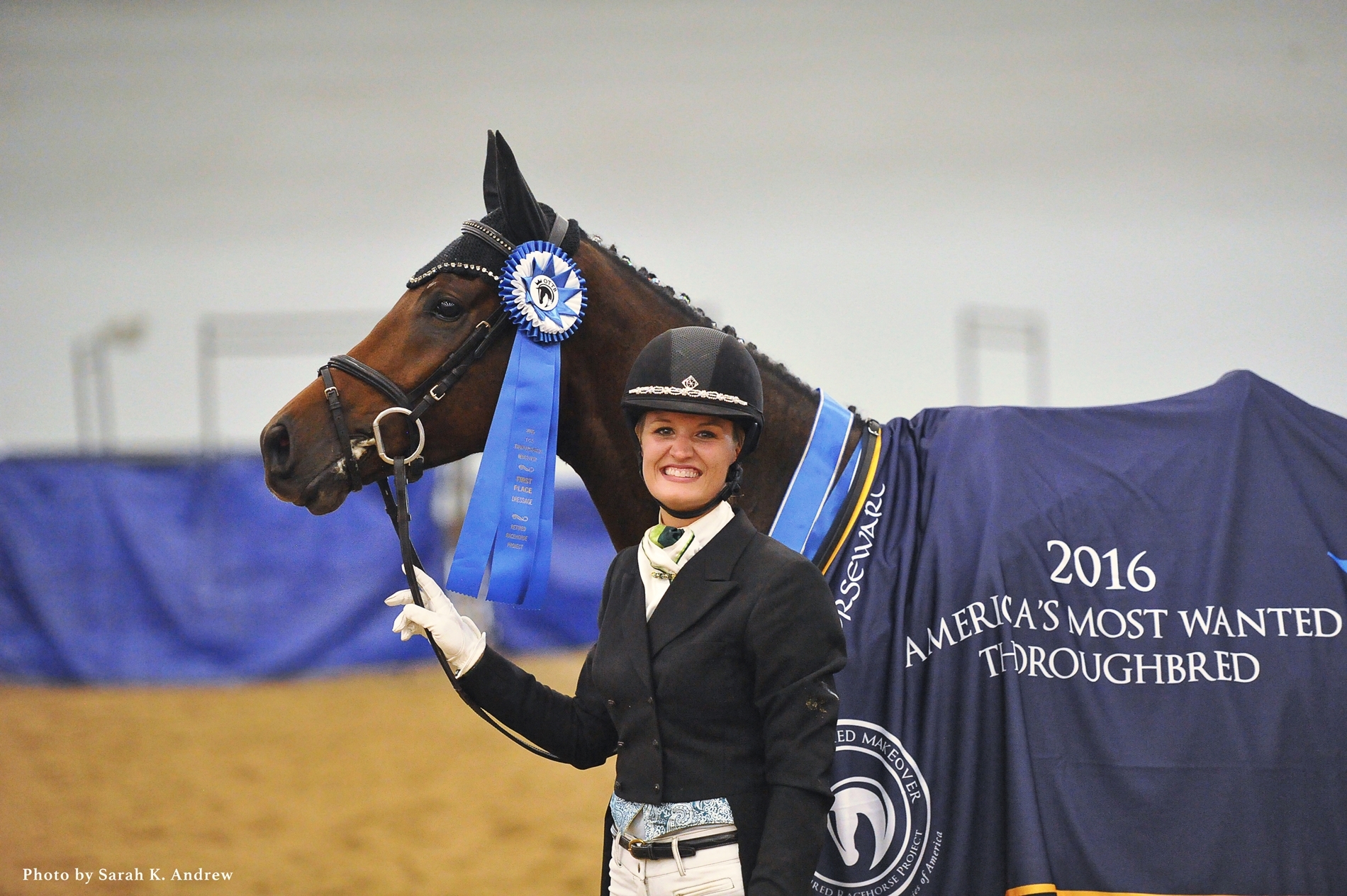By: Erin Shea, @BH_EShea
The Retired Racehorse Project announced Feb. 7 that a record 578 trainers have been accepted to compete for the top prize of $100,000 in the annual Thoroughbred Makeover event Oct. 5-8 at the Kentucky Horse Park.
The competition, which draws a large crowd every year along with its demonstrations and other surrounding events, highlights a trainer's ability to retrain Thoroughbreds for a second career. To be eligible for this year's competition, a horse must have made a start or have a published work after July 1, 2015 and have not started retraining in a second career before Dec. 1.
During the competition, a trainer will show off their horses' skills in one of 10 disciplines, ranging from show jumping and eventing to working ranch and barrel racing.
Although more than 500 trainers have entered, the RRP said only 230 have registered a horse. This means that more than 300 trainers are shopping for eligible horses to train and show this year, creating a competitive market for eligible and capable off-track Thoroughbreds.
As the 2017 Makeover is shaping up to be the largest in its relatively short history, Erin Shea of BloodHorse talked to RRP's president, Steuart Pittman, about the effect the event has had on the off-track Thoroughbred market throughout the last few years. The interview has been edited for brevity and clarity.
BloodHorse: Do you feel this event has changed the marketplace for off-track Thoroughbreds?
Steuart Pittman: Yes, it's not just this event. When we started, we wanted to mix education, competition, and promotion. The (Off-Track Thoroughbred) magazine has been helpful, The Jockey Club's TIP (Thoroughbred Incentive Program) has been helpful, everything has been helpful.
The people who (compete in) the Makeover are not subsidized, they are putting their own money in...It really is proving that when you engage the horse industry—the broader industry of the riding sports—you can really have a huge impact on the issue. That's been exciting to see.
BH: It seems that "Makeover eligible" is a selling point now.
SP: For every horse that does the Makeover, there are a bunch that don't do the Makeover and people who don't do the Makeover. What some trainers do, they get two or three (eligible) horses...and it multiplies. There are students who are doing this, and it's become almost a rite of passage for juniors or Pony Clubbers to be able to train a horse off the track. It puts value on the training process more than the typical horse show does.

Lauren Turner with Fairway King, who took the top prize in last year's Thoroughbred Makeover. Photo: Sarah K. Andrew
BH: Some of the Makeover horses are for sale. Do you think there is an increased value for horses who have competed in the Makeover?
SP: There are people who say the cost of a horse on the backside of the racetrack is going up—racing owners are realizing they have something of value. But some (competitors) are saying, 'I put in months (of training into an off-track horse) and I can't get my money back because I didn't increase the value enough.'
My perception is it all depends on how good of a trainer you are. You see people who are very good at this, have been doing it for years, and can train a horse beautifully, and those horses are selling. Look at Isabella de Sousa (daughter of Hidden Brook Farm's Sergio de Sousa)—teenage kid, fantastic rider, two years in a row both of her (Makeover competition) horses sold for $30,000. If you train the horse well, there is money to be made. There are two areas for payoff: prize money and increasing the value of your horse.
We've found that less than half (of competitors) sell their horses, it's amazing how many people fall in love with them and don't want to sell them.
BH: Where do you see re-homing organizations fit into this?
SP: Keeping the horse for nine months or a year and competing (in the Makeover) is not their mission. Their mission is to move horses through faster. What virtually all of them have told us is that horses are moving through faster because of the Makeover. Some of them are actively encouraging people to get their Makeover horses through them because it puts (the organization) in the spotlight.
Around 10% (of Makeover competitors get horses) from an accredited aftercare organization and it's around 13-14% from all aftercare organizations. Most people are going straight to the track or are going to re-sellers on the backside of the track. We know (a re-seller) who sold 225 horses last year. Some people turn their nose up at that and say, 'Well that person is making money.' And actually, they usually aren't and they're just racetrackers trying to do a good thing and are selling them inexpensively.
There are a lot of mechanisms out there. And as demand increases a lot of business ventures start up.
Aftercare facilities will adapt to the increasing demand by figuring out where their niche is—some of them are doing more rehab. All of them are supposed to be a safety net to basically fill in the gap where the market doesn't take care of the horses. They have to figure out where the gap is in their community. It's different in Oklahoma than it is in Maryland because the riding community is different.




